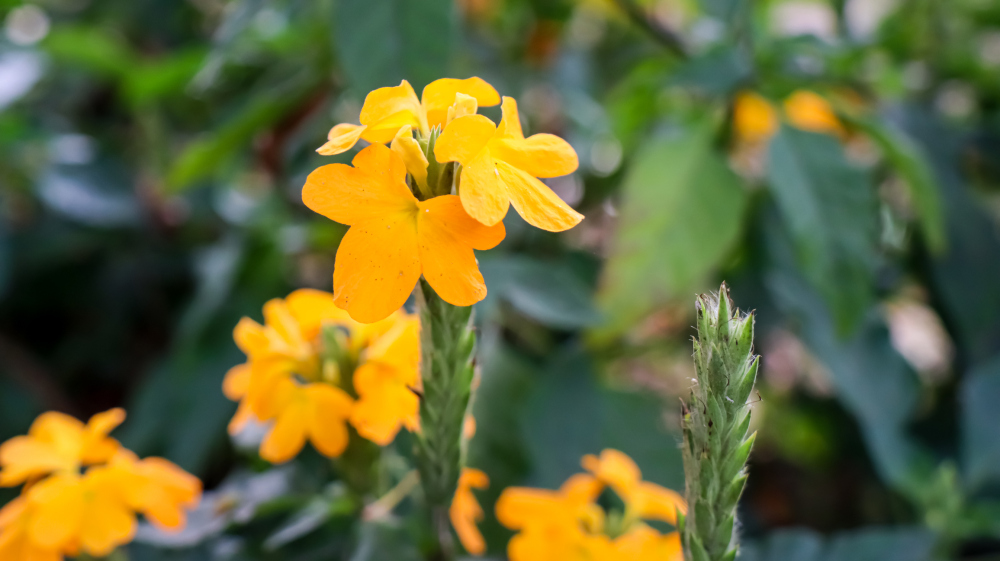
With its vibrant orange, salmon, or coral blooms and glossy green leaves, Crossandra infundibuliformis, commonly known as the Firecracker Flower, is a stunning tropical plant that brings a splash of color to any indoor or outdoor space. Native to southern India and Sri Lanka, this heat-loving plant is admired for its long blooming period and eye-catching appearance. Let’s dive into the essential care tips to help your Crossandra thrive!
Crossandra loves bright, indirect light. It thrives best near a south or east-facing window, where it can soak up 4-6 hours of gentle sunlight daily. If growing outdoors, place it in partial sun — morning light is ideal, with some shade during the hottest part of the afternoon. Too much harsh sunlight can scorch its leaves, while too little light may reduce blooming.
This tropical beauty enjoys consistent moisture, but avoid soggy soil. Water when the top 1-2 inches of soil feels dry. In warmer months, you may need to water 2-3 times a week, but reduce this during fall and winter when the plant’s growth slows.
Crossandra doesn’t like drying out completely — wilting leaves are a sign you’ve waited too long between waterings. On the other hand, yellowing leaves may suggest overwatering, so finding the right balance is key.
Crossandra prefers well-draining, rich soil. A peat-based potting mix combined with perlite or sand works well. The soil should retain moisture without staying soggy. Ensure your pot has drainage holes to prevent water from accumulating at the bottom, which could cause root rot.
Being a tropical plant, Crossandra enjoys warm temperatures between 65-85°F (18-29°C). It’s sensitive to cold and should never be exposed to temperatures below 55°F (13°C). Keep it away from cold drafts, air conditioners, or chilly windows.
High humidity is crucial for Crossandra’s health. It thrives in 50-60% humidity. If you’re growing it indoors in a drier environment, mist the leaves regularly, place it near a humidifier, or set the pot on a tray of pebbles filled with water to increase humidity.
Feed your Crossandra with a balanced liquid fertilizer (like 10-10-10 or 20-20-20) every 2-4 weeks during spring and summer. To encourage even more blooms, switch to a phosphorus-rich fertilizer (something like 10-30-10) in the flowering season.
Cut back on feeding in fall and winter, when the plant enters a slower growth phase.
Regular pruning keeps Crossandra bushy and encourages new blooms. After flowering, deadhead spent blooms by pinching them off. This prevents seed formation and promotes continuous flowering.
Trim any leggy or overgrown stems to maintain a compact shape. Crossandra is a fast grower, so occasional pruning keeps it looking neat and encourages vibrant new growth.
Crossandra is easy to propagate — perfect if you want more of these cheerful blooms around!
Good news for pet owners — Crossandra is non-toxic to cats and dogs! You can safely enjoy this vibrant plant without worrying about curious pets getting into trouble.